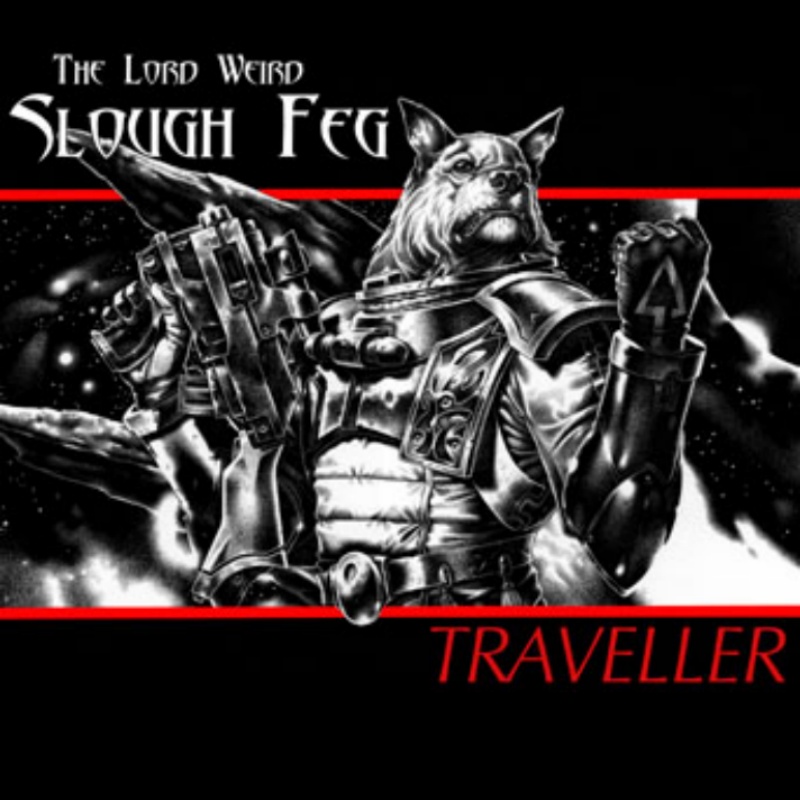When Mongoose first released their version of Traveller, I was fairly enthusiastic. With a few minor glitches, the core rules got things right. It didn't take too long though before the kind of slipshod editing and production errors that have come to be associated as typical of Mongoose products began to appear. Missing paragraphs, incorrect tables of contents and typos galore. Combined with a few questionable editorial decisions *cough* 760 Patrons *cough* I soon lost the urge to collect all the books as they came out.
I do still have to give credit for at least one thing they're doing right : the setting. They decided from the beginning to split the setting from the rules. This let's them use the core rules as a generic system, which they've already used to support supplements for Hammer's Slammers and Babylon 5. And, perhaps unintentionally, it lets fans of the Third Imperium just buy the Third Imperium books and pass over the rulebooks.
While the separation between the two isn't perfect (supplements like Fighting Ships are full of Third Imperium specific designs), it is good enough for my purposes.
Most of the decisions they've made regarding the development of the Third Imperium Setting have been good ones. They started by resetting the clock back to the year 1105 by the Imperial Calendar (5626 AD), the year that GDW started with back when they first created the setting. A lot of later developments in the setting weren't appreciated by all the fans, so by doing things this way, they don't totally alienate anybody.
Next, they picked a single region and chose to expand outwards from it. The original Traveller made the mistake of having two settings: The Spinward Marches, and the Solomani Rim. The problem was that while both are sectors of the Third Imperium, they are on opposite ends of the Imperium. Due to the sheer size of the overall setting, no campaign would ever end up using both settings. Mongoose wisely decided to just pick the Spinward Marches (the more popular of the two settings) and expand out from it.
The first Third Imperium product from Mongoose was a book about the Spinward Marches. While they didn't attempt to write the definitive text (after all this time such a thing would probably take multiple volumes), they did add some new things and set up the seeds for a series of possible futures, not just the one future that occurred in the original setting timeline. There's enough there for people new to the setting to get going, but presented in such a way that those already familiar with the setting now have a lot of new options to toss into the mix.
One of the biggest changes is the shift of focus in the political sphere. The focus of the original setting was Duke Norris of Regina. A clash between the Imperium and the neighboring Zhodani led Norris to take a prominent role in Spinward Marches politics, becoming the Sector Duke and eventually Arch-Duke of the re-established Domain of Deneb. In the Mongoose setting, Norris is still a relatively minor player who barely gets a mention. The focus is instead on Duchess Delphine of Mora, an important trade world. This simple shift in focus adds a lot of interesting new detail to the setting, and several different options for where to take a Spinward Marches campaign other than through the events developed in the original timeline.
Next, they introduced the first alien book, Aslan, covering one of the major races that has a presence near the Spinward Marches. In addition, they covered the entire Trojan Reach sector that lies immediately to Rimward (towards the galactic rim) of the Spinward Marches in as much detail as the Marches themselves were covered in the first book. They followed this up with the Vargr module and the Gvurrdon sector to Coreward (towards the galactic core) of the Marches.
The latest book is another sector book, like the Spinward Marches book, but this time covering the Reft Sector that lies to Trailing (Spinward refers to the direction the galaxy is spinning, while Trailing is the opposite direction) of the Trojan Reach. This sector includes the Islands Clusters subsectors that have been a part of the Traveller universe for some time. While in the original timeline these subsectors were cut off from the Imperium and waged a bloody multi-sided war that started sometime after 1106, this book changes things a bit by establishing a minor Imperial presence in the region prior to the outbreak of war, and presenting alternate future possibilities that don't necessarily end in war.
In addition, Mongoose has been releasing "map packs" for each sector they detail, which are simply a poster sized map of the sector in question.
I hope that Mongoose continues releasing information on sectors that connect to the sectors already released.
I also hope that they stick with their "snapshot" approach to describing the Third Imperium. So far every product has been created as if it were a snapshot of the situation as it exists in 1105. There is no attempt to move the timeline forward as each product is released, as was done with the original Traveller products. This lets a GM move the timeline forward on his own, either following the original metaplot, creating his own, or letting the actions of the players have more influence over the course of events.
At this point I don't really ever expect to run a game set in the Third Imperium again, but I do still like reading about it, which is why I'm still buying these books despite no longer collecting the rules.
Last Man Standing: Life at the Bottom of the Retail Funnel
-
In roleplaying games there is the funnel. You throw a bunch of zero level
townsfolk into a meat grinder and see who crawls out. The survivors become
hero...
3 weeks ago










